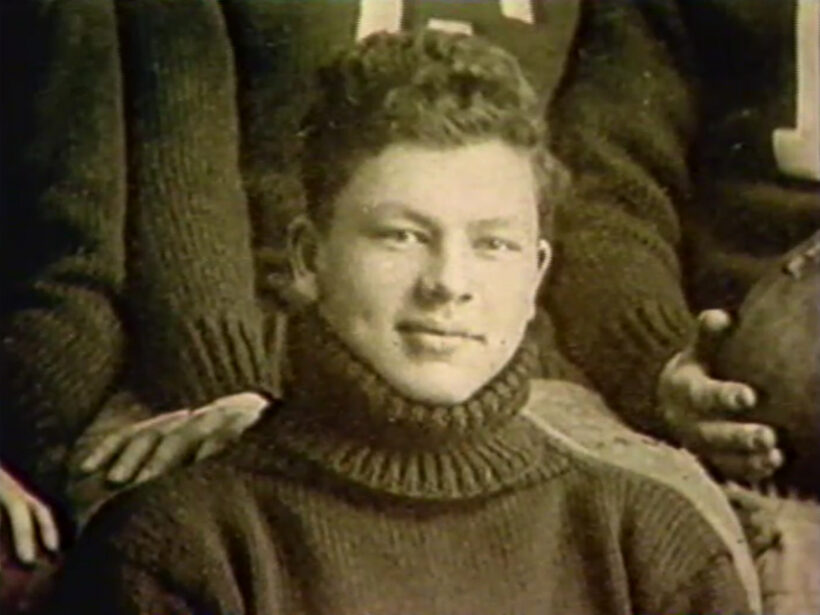Most people think similar things when they hear the name “Lambeau”. Legend. History. Founder. Hall of Famer. Acme Packing Company. Lambeau Field, obviously. The man more than earned his way into football lore. Dig deeper, and his story gets even more interesting. TRIGGER WARNING: He wanted to move the Packers to Los Angeles. Before coming to any conclusions, let’s examine how that came to be.
NFL franchises are now entrenched in an eternal pissing contest. Naturally, the Cowboys are the trendsetters. Jerry World set the trend for stadium excess. Now, Dallas is setting the bar for training facility excess. Imagine Bronco Nagurski getting hydrotherapy after a non-contact practice at “The Star”, followed by lounging at the rooftop pool. The idea of a dedicated practice facility for a NFL franchise had to start some place. Indeed, it started with Curly Lambeau purchasing a facility 17 miles north of Green Bay named the Rockwood Lodge for $32,000 in 1946.
A dedicated facility for practice, meetings, and housing was a foreign idea in 1946, to say the least. In the mid-20th century, the $32,000 price tag was an abomination to members of the Packers’ board of directors. All this money was to be spent for but a handful of football games each fall? Those board members certainly did not foresee the era of professional football excesses that Curly possibly envisioned in today’s NFL. This was more than a rational thought process by the board members in a society coming off the Great Depression and the second World War. The promises of an evening supper and seeing the next day’s sunrise were not taken for granted in that era. The idea of a group of grown men playing a kid’s game having a 51 acre property located nearly 20 miles out of town to practice for said kids game seemed ridiculous. Curly, however, saw into the future.
Rockwood Lodge was love at first sight for Curly. The foundation was there for a pro team to flourish: lodging, tennis courts, an amphitheater, natural scenery, and no distractions. In the 1940s, however, this outpost was too far from Green Bay for fans to view practices. More importantly, the practice field was brutal. Built upon limestone, it earned the nickname of “The Rock”. Anything compared to Alcatraz cannot be because of something favorable.
Thus, several years of practicing on a rock-like surface resulted in injuries that players blamed for lackluster performance on Sundays. The upkeep of the facility also drained the finances of the Packers. By 1949, Curly was in a battle of with Board of Directors on how to handle the direction of the team. With Curly bearing the bottom line of the team’s finances, he had to look for other income as any businessman would. What he found was enough investors to put $50,000 toward the team if they transitioned from public to private ownership. In addition, the investors, and Curly, would seek to move the team to the more fruitful market of Los Angeles.
The threat of moving a NFL franchise to L.A. is over half a century old. If the financial means are not there in the current market, you seek out the investors and find a better market. This is not a new concept. Curly knew about the “Well, maybe we’ll just move to L.A.!” tactic before anyone else did. He just didn’t have the leverage that today’s franchises have.
Suddenly, Rockwood Lodge burned down on January 24, 1950. The insurance payout was more than enough to keep the team afloat and in Wisconsin. Lambeau left the Packers for the Chicago Cardinals a week after the fire, mainly because of the disconnect that developed between him and the rest of the board that wanted to keep the team in Green Bay. Does leaving the Packers for an arch rival ring a bell (see: Favre, Brett). Yet again, Lambeau was a trendsetter.
The great mystery is whether Rockwood Lodge’s fire was a coincidence, or whether it was staged to gather insurance money for the team. There are records of the lodge being labeled at risk due to its electrical setup, so it was already deemed a fire hazard. The fact that it burned down during a January thunderstorm would indicate a freak occurrence as well. However, there are conspiracy theories out there of those who supposedly know who lit the fateful match that ultimately kept the Packers in Green Bay. We will probably never know the truth of truths. That is probably for the best.
As everyone knows, the franchise ultimately survived, and is stronger than ever today. The next time you inevitably hear a national TV broadcast gushing over the whole “smallest market in pro sports is owned by the people” shtick, just remember that would probably not be happening if not for a mysterious fire north of Green Bay in the winter of 1950.
________________
John Piotrowski is a UW-Eau Claire alum, spending most of his life in western WI. He makes the trek east to Lambeau whenever possible. Follow him on twitter at @piosGBP.
________________

